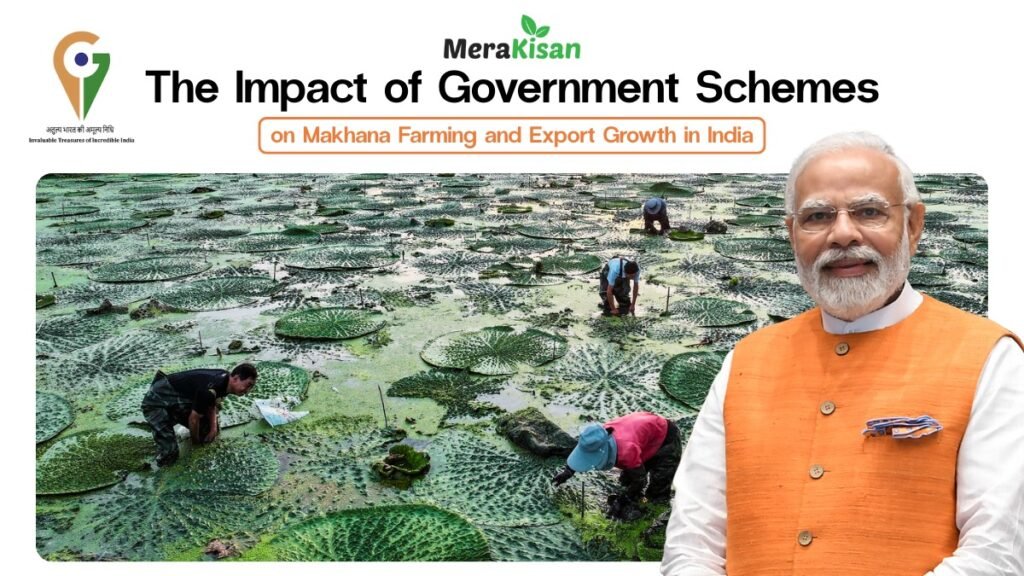The Evolution of Makhana Farming
The story of Makhana isn’t a new one, but has been around for centuries in India. But something amazing happened in 2014, makhana farming in India, especially in Bihar, saw a turning point. During the ruling party’s election campaign, Prime Minister Narendra Modi promised to support Makhana’s cultivation, production, and marketing. Since Bihar was already a key producer of this cash crop, the promise made sense and brought hope to local farmers.
The result was clear—household incomes improved, and many challenges related to makhana farming were slowly addressed. Over the years, support from the central government has helped transform how makhana is grown in India.
Indian Government Role in Boosting Makhana Farming
The Indian government aligned with the Indian Council of Agricultural Research (ICAR), and together they achieved the biggest breakthrough of making a special makhana seed called ‘Swarna Vaidehi’.
This seed allowed farmers to grow makhana just like paddy. It made intercropping easier and opened up new possibilities for farmers with limited land. The results were amazing for this seed: better harvesting, improved crop quality.
Bihar Government Role in Boosting Makhana Farming
The Bihar State Government also introduced several schemes to support farmers, traders, and processors. These were designed to reduce financial pressure and speed up the production of Makhana.
Some key initiatives include:
- Stamp duty and registration fee waivers for land used to set up makhana units.
- Tax rebates for those investing in makhana farming infrastructure.
- Capital investment reimbursements for plant and machinery used for power generation.
- Formation of state and district-level committees to approve applications quickly.
- Launch of a single-window clearance system to reduce delays and limit the need for multiple government interactions.
Export Challenges in the Makhana Industry
India has emerged as a leading producer of makhana, but there are still challenges that limit its full export potential. At the same time, new opportunities are opening up, especially in global markets.
Quality Control Issues
A large part of India’s makhana output does not meet the strict quality standards required for international exports. This is mostly because harvesting and processing are still done manually, which can lead to inconsistency in quality.
Solution- We can invest in technology, and proper training is needed to ensure that makhana meets global benchmarks.
Weak Global Branding
While India dominates the makhana market, it still lacks a strong global brand presence. Makhana is often sold as a generic product, which affects its pricing and market value.
Solution- Developing a strong brand identity and investing in smart marketing can help create better awareness among global consumers.
Inefficient Value Chain
From farms to export markets, the makhana value chain has too many gaps. Storage issues, outdated transport systems, and too many middlemen reduce both quality and profits.
Solution- We can focus on improving infrastructure and cutting down unnecessary steps in the supply chain can lead to better returns for all stakeholders.
Limited Awareness of Government Schemes
There are several government schemes available, but many farmers and exporters still don’t benefit from them. A stronger push for training programs, subsidies, and easier access to financial help can go a long way in strengthening the industry.
Read how GI-tagged Makhana from India is changing the global market
Interested in Wholesale or Bulk Buy Makhana?
📧Contact Mera Kisanat: info@merakisan.com
🌐 Get Free Sample Click Here
Schemes include stamp duty waivers, tax rebates, and capital investment support in Bihar.What are the government schemes available for Makhana farmers?
Why is export support missing for Makhana in India?
How can farmers benefit more from these schemes?

